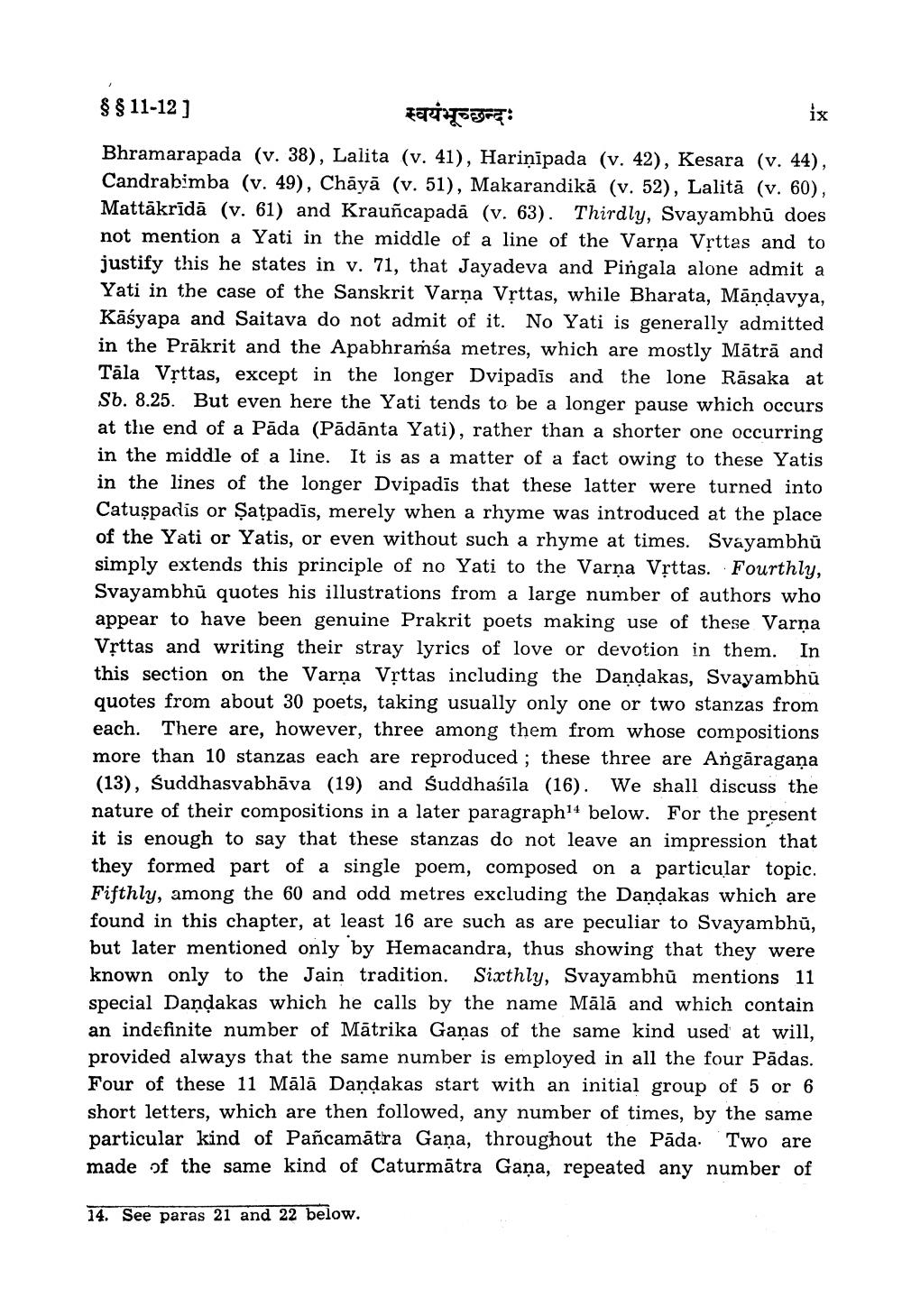________________
$ $ 11-12]
स्वयंभूच्छन्दः
Bhramarapada (v. 38), Lalita (v. 41), Hariņīpada (v. 42), Kesara (v. 44), Candrabimba (v. 49), Chāyā (v. 51), Makarandikā (v. 52), Lalitā (v. 60), Mattākridā (v. 61) and Krauñcapada (v. 63). Thirdly, Svayambhū does not mention a Yati in the middle of a line of the Varna Vrttas and to justify this he states in v. 71, that Jayadeva and Pingala alone Yati in the case of the Sanskrit Varņa Vșttas, while Bharata, Māndavya, Kāśyapa and Saitava do not admit of it. No Yati is generally admitted in the Prākrit and the Apabhramśa metres, which are mostly Mātrā and Tāla Vșttas, except in the longer Dvipadīs and the lone Rāsaka at Sb. 8.25. But even here the Yati tends to be a longer pause which occurs at the end of a Pāda (Pādānta Yati), rather than a shorter one occurring in the middle of a line. It is as a matter of a fact owing to these Yatis in the lines of the longer Dvipadis that these latter were turned into Catușpadis or Şațpadīs, merely when a rhyme was introduced at the place of the Yati or Yatis, or even without such a rhyme at times. Svayambhū simply extends this principle of no Yati to the Varna Vrttas. Fourthly, Svayambhū quotes his illustrations from a large number of authors who appear to have been genuine Prakrit poets making use of these Varna Vrttas and writing their stray lyrics of love or devotion in them. In this section on the Varņa Vșttas including the Dandakas, Svayambhū quotes from about 30 poets, taking usually only one or two stanzas from each. There are, however, three among them from whose compositions more than 10 stanzas each are reproduced ; these three are Angāragana (13), Suddhasvabhāva (19) and suddhaśīla (16). We shall discuss the nature of their compositions in a later paragraph14 below. For the present it is enough to say that these stanzas do not leave an impression that they formed part of a single poem, composed on a particular topic. Fifthly, among the 60 and odd metres excluding the Dandakas which are found in this chapter, at least 16 are such as are peculiar to Svayambhū, but later mentioned only by Hemacandra, thus showing that they were known only to the Jain tradition. Sixthly, Svayambhū mentions 11 special Dandakas which he calls by the name Mālā and which contain an indefinite number of Mātrika Gaņas of the same kind used at will, provided always that the same number is employed in all the four Pādas. Four of these 11 Mālā Dandakas start with an initial group of 5 or 6 short letters, which are then followed, any number of times, by the same particular kind of Pañcamātra Gana, throughout the Pāda. Two are made of the same kind of Caturmātra Gaņa, repeated any number of
14. See paras 21 and 22 below.




